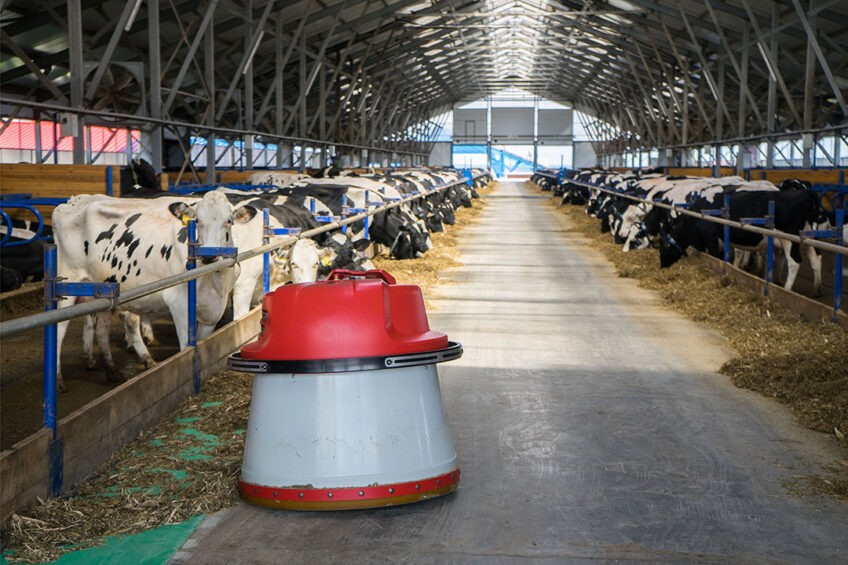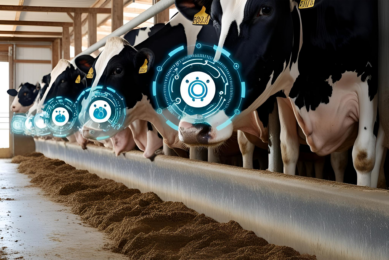Challenges, opportunities and prospects for EU dairy

Researchers from Wageningen University have provided a range of policy recommendations for the European Parliament to consider to bolster dairy farming and sustain rural communities.
The study provides an overview of EU27 milk production both prior to and following the abolition of quotas in 2015, which marked the ending of a significant constraint on the development of the EU milk sector, enabling market forces to replace a supply constraint as a driving factor of milk supply.
In its executive summary, the study, led by Professor Roel Jongeneel, says that EU dairy production has increased considerably over the past 20 years, partly due to EU expansion and more recently due to the abolition of quotas. These market developments took place in a context of declining cow numbers, rising milk yields per cow, a reduced number of dairy farms and a larger average dairy farm size.
EU dairy more competitive
The abolition of quotas, alongside various Common Agricultural Policy reforms, have made the EU dairy sector more internationally competitive, both at farm and industry level, and have helped boost growth in export markets worldwide.
However, this has also resulted in a more direct price transmission between world and EU dairy product markets, resulting in increased volatility in terms of both milk prices and farm incomes, to varying degrees across EU member states.
Key findings since milk quota abolition
The study found that the most competitive countries are Belgium, Denmark, Luxembourg, Ireland and the Netherlands and that production has gone up and down largely as a reflection of the competitiveness of the sector across member states.
It also noted the sector underwent a number of structural changes, including a very large reduction in the number of dairy farmers, a general increase in the average size of dairy farms, and a long-term decline in dairy cow numbers and offsetting increase in dairy cow yields.
Milk price evolution, volatility and competitiveness post abolition
Milk price volatility varies considerably, and EU farmers’ milk supply responses seem to be more price inelastic in the post-quota period. Typically, member states with a greater export orientation have more volatile farm milk prices.
The rapid growth in global dairy demand has led to a convergence of the EU and world market, strengthening the outward orientation of the EU dairy processing industry. This convergence is due to increases in world market prices.
Prospects and challenges
Green policy is exerting an increasing influence over the sector, particularly regarding nutrient and greenhouse gas emissions in a number of countries, and dairy farms in disadvantaged regions face additional sustainability challenges which need to be addressed by policymakers.
The average age of dairy farmers continues to rise while the labour-intensive nature of the sector makes it unattractive to young farmers.
As price takers, dairy farmers occupy a vulnerable position in the dairy supply chain and must grapple with high levels of milk price and input price volatility. The challenges faced by dairy farmers are compounded by the lag in the transmission of prices along the dairy chain.
Policy interventions after the quota abolition
The report says that while there is a rich framework of policy instruments, including market measures, farm income support and safety net provisions, which help producers, alongside National Strategic Plans to tailor policies at member state level, additional instruments are needed to deal with volatility.
Despite increased competitiveness, the reliance of net dairy farm income on EU income support payments is still substantial – close to 40% on average with differences across member states – signalling the importance of such income support policies.
Key recommendations
In the wide-ranging report, the authors say the various challenges faced by the sector – price volatility, environmental and climate and generational renewal – require an adequate policy framework. Consideration, for example, should be given to mechanisms that incentivise or reward individual farmers for efforts to reduce their farms greenhouse gases. Incentivising a reduction in GHG emissions through the adoption of mitigation technologies would be preferable to simply cutting milk production.
One tool that could work would be to initially grant farmers a quantity of emissions rights, which would then be gradually reduced year by year. A market would then be created to access emission rights, placing a carbon price on these emissions. In theory, placing a price on the GHG emissions produced by the farm would incentivise the dairy farmer to take forward emission reduction technologies, if doing so is cheaper than the cost of buying emission rights.
Dairy processors must be made fully aware of the importance of monitoring the total amount of emissions generated by their milk suppliers rather than focusing solely on the carbon footprint of the milk produced.
More support should be given for technological solutions that could reduce the labour needed on farms, increasing the attractiveness of dairy farming for the younger generation, making renewal more likely.
The paper doesn’t advocate promoting organic farming over conventional dairy systems, saying some of the latter may deliver environmental benefits that are near equivalent with fewer challenges, such as sourcing of organic feed and costs of certification.
Finally, it argues that policymakers should consider wider take-up of fixed milk price contracts across the EU dairy sector, saying they are a policy tool that help address price volatility and provide farmers with greater certainty. Evidence from Ireland suggests that the tool has both merit but also flaws.
Join 13,000+ subscribers
Subscribe to our newsletter to stay updated about all the need-to-know content in the dairy sector, two times a week.










